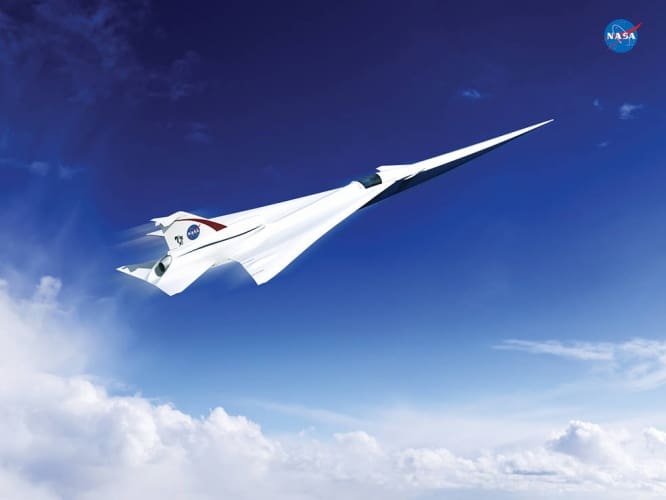NASA has awarded Lockheed Martin a contract for the preliminary design of a “low boom” flight demonstration aircraft, which it hopes will be the first step towards a new supersonic passenger jet.
The project is the first in a series of ‘X-planes’ that are part of NASA's New Aviation Horizons initiative. A key factor will be the development of Quiet Supersonic Technology (QueSST) that will diminish the loud sonic booms traditionally associated with supersonic flight. According to NASA, the aim is to create a supersonic "heartbeat" that will deliver a soft thump rather than a disruptive boom.

“NASA is working hard to make flight greener, safer and quieter – all while developing aircraft that travel faster, and building an aviation system that operates more efficiently,” said NASA Administrator Charles Bolden.
Lockheed Martin will receive about $20 million over 17 months for QueSST preliminary design work. The US defence giant will lead a team that includes subcontractors GE Aviation of Cincinnati and California-based Tri Models Inc. Alongside design and construction, the project will also include a Low Boom Flight Demonstration (LBFD) phase that will involve community feedback on the quieter supersonic design.
“It’s worth noting that it's been almost 70 years since Chuck Yeager broke the sound barrier in the Bell X-1 as part of our predecessor agency's high speed research,” said Bolden.
“Now we’re continuing that supersonic X-plane legacy with this preliminary design award for a quieter supersonic jet with an aim toward passenger flight."
Overland commercial supersonic flight was banned in the US in 1971 over concerns arising from the noise pollution of sonic booms, as well as the detrimental effect of engine exhaust on the ozone layer. As part of the 10-year New Aviation Horizons initiative, NASA has set goals to reduce fuel use, emissions and noise through innovations in aircraft design that depart from the conventional tube-and-wing aircraft shape.




Swiss geoengineering start-up targets methane removal
Several rather dubious statistics in this report. IF methane had 120× the thermal effect of CO2 that would be TWO orders of magnitude. Two is not...